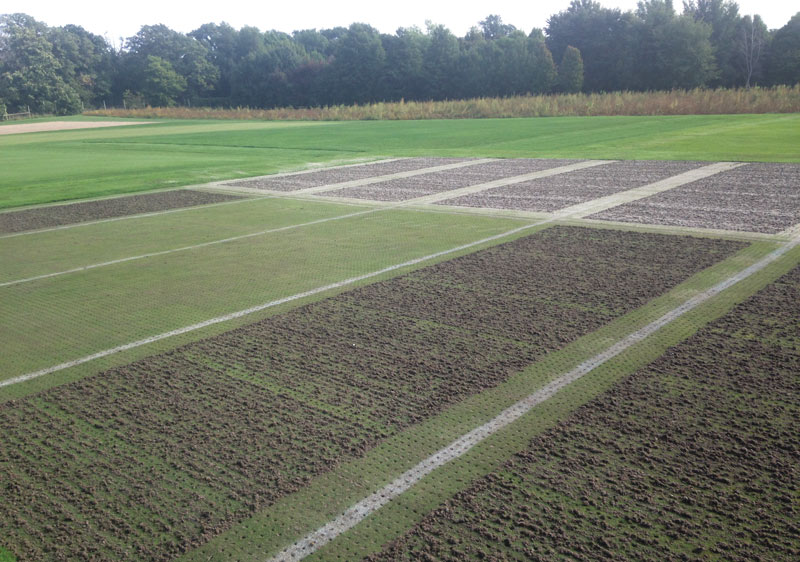
Photo by Adam Thoms
Studies have shown that regular topdressing and aeration improves both soil and plant health of greens, but limited-budget and rural courses can have difficulty finding sand that is consistent with the current root zone and is also affordable.
Scientists at Iowa State University attempted to determine whether recycling cores with the Wiedenmann core recycler would reduce the amount of sand needed for topdressing. One positive effect of core recycling is that the sand will be similar to that in the existing green, avoiding concerns of layering caused by different sand sources. However, little is known about possible negative effects of core recycling on root-zone organic matter levels, water infiltration rates, recovery time frame and ball roll.
At Iowa State, a trial was conducted comparing traditional core cultivation, core collection and topdressing with core cultivation, core recycling and topdressing. Sand topdressing was applied before and after cultivation in a strip-plot treatment to test improvements in sand incorporation. We evaluated percentage of organic matter, percentage of cover/recovery, ball roll, soil moisture, sand usage, and water infiltration rates. The trial was conducted on a creeping bentgrass green built to USGA recommendations and maintained at 0.128 inch (3.25 mm).
Preliminary data show no differences between treatments for water infiltration, recovery time, ball roll and soil moisture. Core recycling increased the percentage of organic matter (15.9% in the recycled treatments vs. 8.7% in the traditional treatments) a month after treatments had taken place, and reduced the amount of additional topdressing sand required by 91.8% compared with traditional cultivation. These data suggest cost savings with little impact on putting green performance, but further research is needed to assess the long-term effects of core recycling.
— Benjamin Pease; Adam Thoms, Ph.D.; Nick E. Christians, Ph.D.; and Isaac Mertz, Iowa State University, Ames, Iowa
Editor’s note: An earlier version of this summary was published in the 2017 ASA-CSSA-SSSA Meeting Abstracts, ASA, CSSA and SSSA, Madison, Wis.
Teresa Carson is GCM’s science editor.